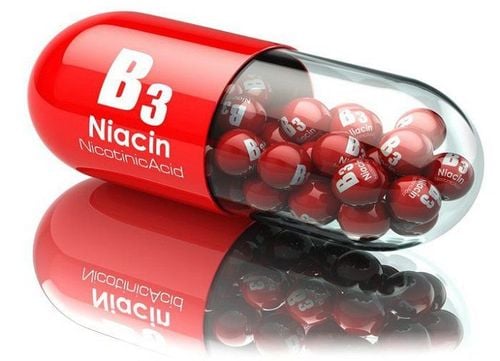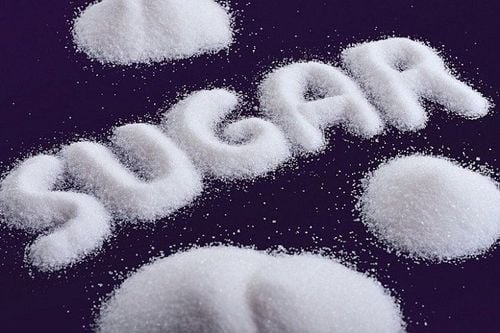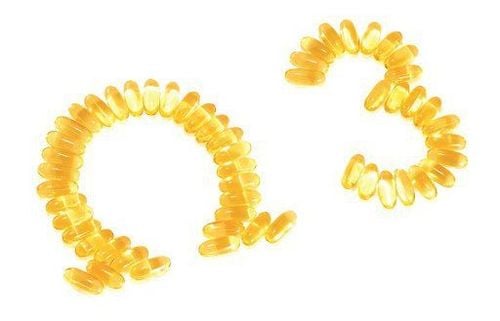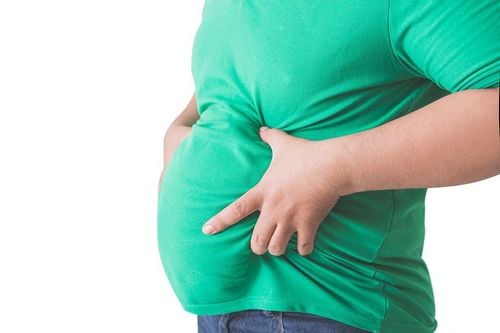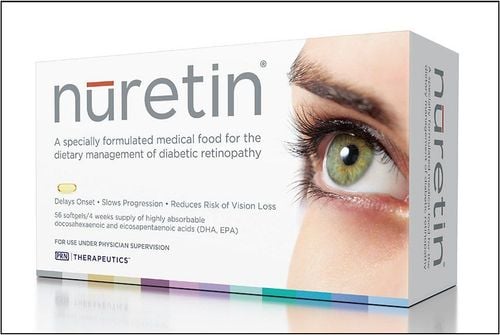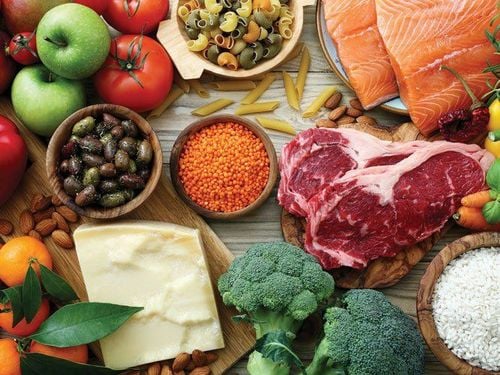This is an automatically translated article.
High-fat diets can lead to weight gain. But the thing to be concerned about is not necessarily the food containing fat, but the amount of calories consumed. Because, in the body calories are stored as fat and it can come from fat-free foods. To lose weight, you need to burn more calories than you eat.1. What is a low-fat diet?
A low fat diet is an eating plan that is low in overall fat, unhealthy fats, and cholesterol. You may need to follow a low-fat diet if you have trouble digesting or absorbing fat. You may also need to follow this diet if you have high cholesterol. You can also lower cholesterol by increasing the amount of fiber in your diet. Soluble fiber is one of several types of fiber that help lower cholesterol levels.In addition, you can apply this diet as a weight loss diet to have an ideal and suitable weight.
2. Fat needs
Experts recommend that most adults get 20%-35% of their daily calories from fat. That's about 44 to 77 grams of fat per day if you eat 2,000 calories per day.Read nutrition labels on food packaging. The nutrition label indicates the number of grams of fat per serving and the number of calories per serving. Eat a wider variety of low-fat foods to get all the nutrients you need.
Eat plenty of plant foods (such as whole grains, fruits and vegetables) and moderate amounts of lean and low fat, animal foods (meat and dairy products) to help control your fat, cholesterol, carbs and calories.
When you shop, choose lean meats, fish and poultry. Limit these to 142-198 grams per day.
Other good sources of low-fat protein include dried beans and peas, tofu, low-fat yogurt, low-fat or skim milk, low-fat cheese and tuna packed in water.
Choose foods rich in omega-3 fatty acids like salmon, flaxseeds and walnuts for heart health. The American Heart Association recommends eating fatty fish like salmon twice per week for the benefits of omega-3 fatty acids.

Các chuyên gia khuyến cáo rằng hầu hết người trưởng thành nhận 20% -35% lượng calo hàng ngày từ chất béo
3. Certain types of fats are found in foods
3.1. Limit unhealthy fats Diets high in cholesterol, saturated fats, and trans fats can cause unhealthy cholesterol levels. Unhealthy cholesterol levels increase the risk of heart-related disease.Cholesterol: Limit cholesterol intake to less than 200 mg per day. Cholesterol is found in meat, eggs and dairy. Saturated fat: Limit saturated fat to less than 7% of your total daily calories. Ask your dietitian how many calories you need each day. Saturated fats are found in butter, cheese, cream, whole milk, and palm oil. Saturated fats are also found in meats, such as beef, pork, chicken skin, and processed meats. Processed meats include hot dogs, sausages, and bacon. Trans fats: Avoid trans fats as much as possible. Trans fats are used in fried and baked foods. Foods labeled trans fat-free can still have up to 0.5 grams of trans fat per serving. 3.2. Healthy fats Replace foods rich in saturated and trans fats with foods high in healthy fats. This can help lower cholesterol levels that may be elevated.
Monounsaturated fats: These are found in avocados, nuts, and vegetable oils, such as olive, canola, and sunflower oils. Polyunsaturated fats: These can be found in vegetable oils, such as soybean or corn oil. Omega-3 fats may help reduce the risk of heart disease. Omega-3 fats are found in fish, such as salmon, herring, trout, and tuna. Omega-3 fats can also be found in plant foods, such as walnuts, flaxseeds, soybeans, and canola oil.
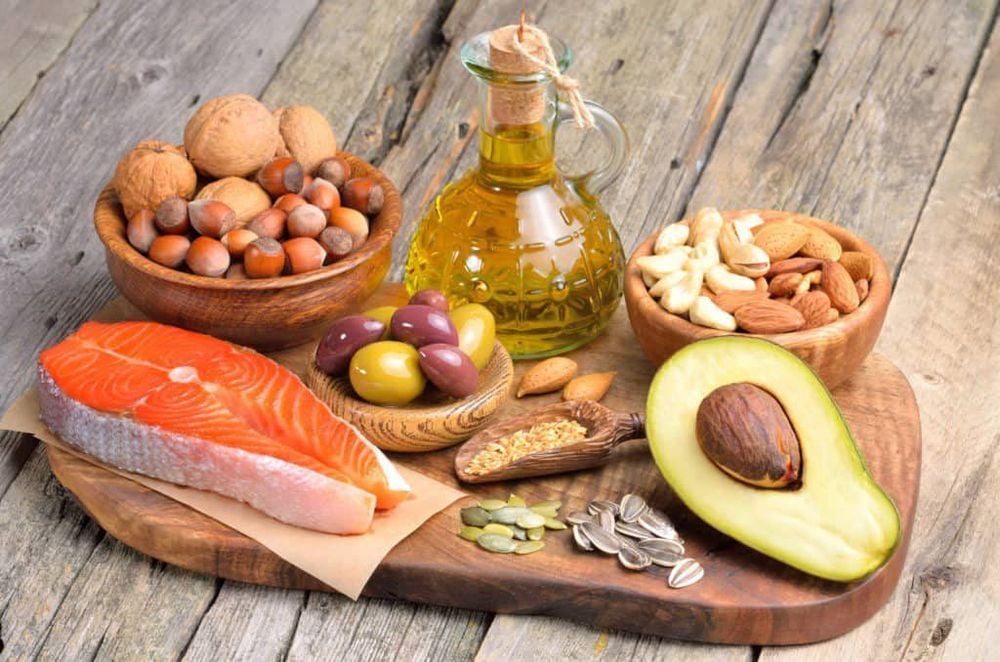
Thay thế thực phẩm giàu chất béo bão hòa và chất béo chuyển hóa bằng thực phẩm giàu chất béo lành mạnh có thể giúp giảm mức cholesterol
4. Foods to avoid on a low fat diet
Some foods to avoid on a 7-day weight loss diet include:4.1. Cereals Snacks made with partially hydrogenated oils, such as chips, regular crackers and flavored popcorn... High-fat baked goods, such as cookies, croissants, donuts, pies, cookies and cakes 4.2. Dairy products Whole milk, 2% milk, yogurt and cream made from whole milk Ice cream, cream and whipped cream Cheese, cream cheese and sour cream 4.3. Meats and proteins Fatty meats (T-bone steak, regular hamburgers and ribs) Fried meat, poultry (turkey and chicken), and fish Poultry (chicken and turkey) with skin Cold cuts ( salami or sausage), sausage, bacon and sausage Whole eggs and egg yolks 4.4. Vegetables and fruits Vegetables or vegetables fried in butter or a high-fat sauce, such as cream or cheese sauces Fried fruit or vegetables served with butter or cream 4.5. Fat Butter, margarine Coconut oil, palm oil and palm kernel oil
5. Some ways to reduce fat in recipes
Replace high-fat ingredients with low-fat or fat-free ingredients. This may cause the baked goods to be drier than usual. You may need to use fat-free cooking spray on the pan to prevent food from sticking. You may also need to change the amount of other ingredients, such as water, in the recipe. Try these:Use low-fat or light margarine instead of regular margarine or short margarine. Use lean ground turkey or chicken breast, or lean ground beef (less than 5% fat) instead of hamburger. Add 1 teaspoon of canola oil to 227 ml of skim milk instead of using cream or half and half. Use zucchini, carrots, or grated apples in the bread instead of the coconut. Use low-fat blended cheese, regular tofu, or low-fat ricotta cheese instead of cream cheese. Use 1 egg white and 1 teaspoon canola oil, or use 1⁄4 cups (57ml) of a fat-free egg substitute instead of a whole egg. Replace half of the oil used in the recipe with apple sauce as you bake. Use 3 tablespoons cocoa powder and 1 tablespoon canola oil in place of a square of toasted chocolate.
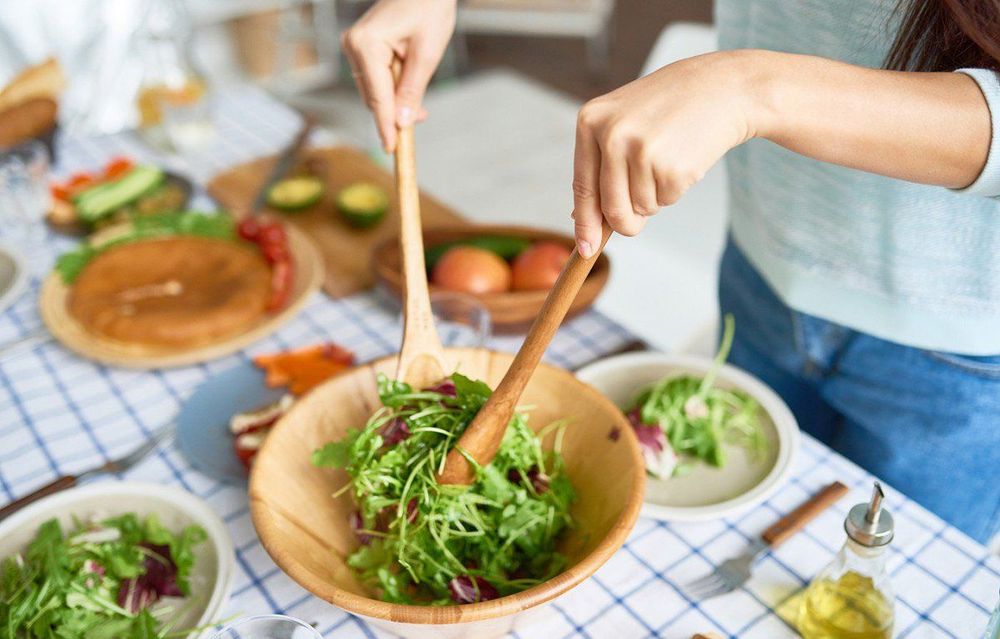
Thay thế các thành phần giàu chất béo bằng các thành phần ít béo hoặc không béo có thể khiến đồ ăn khô hơn bình thường
6. Some methods to help increase the amount of fiber in the diet
Eat enough fiber-rich foods to get 20 to 30 grams of fiber each day. Increase fiber intake slowly to avoid stomach cramps, bloating, and other problems. Eat 85 grams of whole grain foods every day. 28 grams is about 1 slice of bread. Eat whole grain bread, such as wholemeal bread. Whole wheat, whole wheat flour, or other whole grains must be listed as the first ingredient on food labels. Replace white flour with whole grain flour or use half of each in recipes. Whole grain flour is heavier than white flour, so you may have to add yeast or baking powder. Eat high-fiber cereal for breakfast. Oatmeal is a good source of soluble fiber. Look for grains with bran or fiber in the name. Choose whole-grain products, such as brown rice, barley, and whole-wheat pasta. Eat lots of beans, peas and lentils. For example, add beans to soups or salads. Eat at least 5 cups of fruits and vegetables every day. Eat fruits and vegetables with their skins on because the peels are high in fiber.Please dial HOTLINE for more information or register for an appointment HERE. Download MyVinmec app to make appointments faster and to manage your bookings easily.
References: webmd.com, drugs.com, diabetes.co.uk, patient.info



